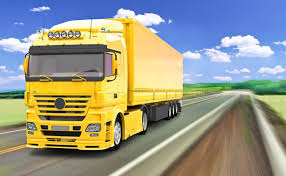Types of Transport Cost.Transportation costs are the costs of transporting goods, passengers using vehicles. Transport costs are included in the price of goods as a transport component.

Nature of Transport Cost In Accounting.
There are quite a few types of costs for transport services, but they can be grouped into three main groups:
- expenses for the delivery of acquired property items (fixed assets, raw materials, materials);
- expenses for the delivery of own products, goods, services to buyers and clients;
- expenses for the maintenance of the fleet of vehicles (fuel and lubricants, maintenance, repair, rent).
Depending on the line of business, transportation costs as part of the costs can vary significantly. For example, in consulting firms their share is negligible, and in forwarding companies it can reach 90%.
The more logistics costs, the closer the attention of the tax inspectorate to their reflection in accounting.
The organization in its accounting policy should provide for the distribution of transportation costs into direct and indirect. There are exceptions for two types of companies:
- which use the cash method of accounting (for example, with the simplified tax system). They do not have a division into direct and indirect costs, since all costs are taken into account when they are paid;
Types of Transport Cost
Whether it is solid or liquid goods, single packages or dangerous goods: depending on the type of goods to be transported, the type of transport varies and, consequently, costs vary. For example, bulk transport is required for building materials and refrigerated transport for foodstuffs . For the transport of goods on pallets, however, the ideal means of transport is a tautliner. For goods that require special attachment, a vehicle equipped with tail lifts is required.
Vehicle costs.
Depending on the distance to be traveled, the fuel costs for the transport order vary. Obviously, the further away the discharge point is, the higher the costs of fuel and all other maintenance materials, such as oil, will be.
Distance from the discharge point.
In addition to the volume of the order, another factor affecting fuel costs is the distance to the unloading point. The distance in kilometers determines the duration of the transport, which in turn affects fixed costs, such as wages. There are basic costs for each transport. Unfortunately, the shorter the distance, the cheaper it will cost to ship.
Toll costs.
In many European countries, the payment of the toll for heavy vehicles is mandatory. The amount of the toll depends on the vehicle class, the environmental class, the number of axles and the distance traveled. You can get this information directly from the management company .
Transportation costs for the delivery of fixed assets.
Paragraph 8 of PBU 6/01 establishes that the amounts paid for the delivery of fixed assets should be included in the cost of its acquisition or construction. At the same time, it does not matter how the fixed assets were received – under a sale and purchase agreement, free of charge or built in an economic way.
They are accounted for as capital expenditures and are reflected in the debit of the capital investment account (08)
- Dt 08 – Kt 60 – the cost of fixed assets without VAT is taken into account;
- Dt 08 – Kt 60 (76) – the costs of transporting the OS are taken into account;
- Dt 01 – Kt 08 – the OS object was put into operation.
The costs of moving fixed assets within the organization are related to production or distribution costs
Treatment of transportation costs.
Ideally, delivery charges made by suppliers should be included as part of the purchase price of the materials so that these costs can be charged as direct costs. Wherever possible, materials should be charged directly to cost objectives rather than being grouped as indirect costs and apportioned to cost objectives. The delivery charge will normally be shown separately on the invoice for the consignment of materials delivery.
When the invoice is for one kind of material only, there is no problem in accounting for the materials, since the delivery charge merely needs to be added to the cost of the materials and the resulting total entered as a receipt for the appropriate item of material.
When the delivery charge refers to several different types of material, the charge must be apportioned to each type of the materials delivered. Such an apportionment could be made according to either the value or the weight of the materials. Alternatively, the clerical work could be simplified by charging transportation costs to a factory overhead account and apportioning these costs as part of the factory overhead procedure.